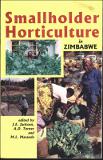| dc.contributor.author | Wien, H.C. | |
| dc.contributor.author | Feldman, S. | |
| dc.contributor.author | Minja, R. | |
| dc.coverage.spatial | Tanzania. | en |
| dc.date.accessioned | 2016-03-22T09:27:11Z | |
| dc.date.available | 2016-03-22T09:27:11Z | |
| dc.date.issued | 1997 | |
| dc.identifier.citation | Wien, H. C., Feldman, S. and Minja, R. (1997) Smallholder vegetable production in Northern Tanzania: constraints and opportunities. In: Jackson, J.E., Turner, A.D. and Matanda, M.L. (eds.) Smallholder horticulture in Zimbabwe. Harare: UZ Publications, pp. 40-56. | en |
| dc.identifier.isbn | 0908307616 | |
| dc.identifier.uri | https://opendocs.ids.ac.uk/opendocs/handle/20.500.12413/10210 | |
| dc.description | A survey of small-holder aggro-farmers in rural Tanzania to highlight their production capacity as well as the challenges faced by their projects. | en |
| dc.description.abstract | A detailed survey of vegetable production in four villages in Arumcru Distriet near Arusha was conducted by research and extension personnel of the Ministry of Agriculture, in collaboration with Cornell University. Households growing vegetables had access on average 7 to 13 acres of land (2.8 to 5.3 ha), and grew from four to six crops. Maize, beans and bananas were common to most households, but the list of other commodities produced varied widely from village to village. Major constraints to production included a lack of access to information on pest and disease identification and control, to timely knowledge of commodity prices, and to alternative market outlets for the production. A district staff of six extension horticulturists served an estimated 6 000 growers in 132 villages in the district. This coverage was not nearly enough to adequately impart information to growers, particularly since telephones were not available, and the extension staff had few vehicles with which to make their rounds. Nevertheless, growers were enterprising and willing to take risks, producing some commodities such as tomatoes during the rainy season, when the chance of crop failure was high but prices advantageous. Further work is needed to assess the impact of increased production on labour allocation. The survey indicated that expanding production could well be limited by the increased burden placed on women to manage both production and household sustenance. In addition, research to identify adapted, high-yielding varieties, and economical and safe methods of disease, insect and weed control are also needed. | en |
| dc.language.iso | en | en |
| dc.publisher | University of Zimbabwe (UZ) Publications. | en |
| dc.rights.uri | http://creativecommons.org/licenses/by-nc-nd/3.0/ | en |
| dc.subject | Agriculture | en |
| dc.title | Smallholder vegetable production in Northern Tanzania: constraints and opportunities | en |
| dc.type | Book chapter | en |
| dc.rights.holder | University of Zimbabwe (UZ) | en |


